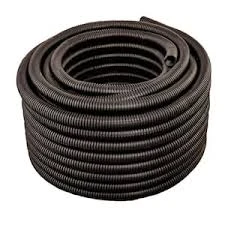Synchronous Belt vs V Belt
Synchronous Belt vs. V Belt Understanding the Differences
When it comes to power transmission in mechanical systems, two of the most commonly used types of belts are synchronous belts and V belts. Both serve the purpose of transferring power from one rotating shaft to another, but they have distinct characteristics and applications. Understanding the differences between these two types of belts can help in selecting the right one for your specific needs.
Synchronous Belts
Synchronous belts, often referred to as timing belts, have teeth that mesh with corresponding grooves on the pulleys. This design allows for precise timing in power transmission, making synchronous belts an ideal choice for applications where synchronization between components is critical. For instance, in automotive engines, synchronous belts are used to align the crankshaft and camshaft, ensuring that the engine's valves open and close at the correct times.
One of the main advantages of synchronous belts is their ability to transmit power without slippage. This means that once the belt is engaged, it will not lose its grip on the pulleys, leading to consistent and accurate movement. Additionally, synchronous belts are generally quieter and have lower maintenance requirements compared to their V belt counterparts. They can also handle higher speeds and are resistant to stretching, which adds to their longevity.
However, synchronous belts can be more expensive than V belts, and they require precise alignment to function optimally
. If not properly aligned, the belt can become damaged or wear out more quickly.V Belts
synchronous belt vs v belt

V belts are characterized by their trapezoidal cross-section, which allows them to fit snugly into matching grooves on the pulleys. They are designed to run smoothly with minimal slip under the right tension. V belts are ideal for a wide range of applications, from small home appliances to larger industrial machinery.
One major advantage of V belts is their cost-effectiveness. They are often less expensive than synchronous belts and can be easier to install and replace. Additionally, V belts can accommodate a slight misalignment between the pulleys, making them more forgiving in terms of installation errors.
However, V belts do have their drawbacks. They are more prone to slippage, which can lead to a loss of efficiency, especially in high-torque applications. Over time, they may stretch and require replacement more frequently than synchronous belts. This can increase the overall cost of maintenance in the long run.
Applications and Conclusion
In summary, the choice between synchronous belts and V belts largely depends on the specific requirements of your application. If precision and timing are critical, synchronous belts are the better option. They offer reliability and efficiency in power transmission with low maintenance needs. On the other hand, if cost is a primary concern and your application allows for some leeway in alignment and timing, V belts may be the ideal choice.
By understanding the key differences between synchronous belts and V belts, you can make an informed decision that enhances the performance and longevity of your mechanical systems. Always consider factors such as application requirements, budget constraints, and maintenance capabilities when selecting the appropriate belt type.








